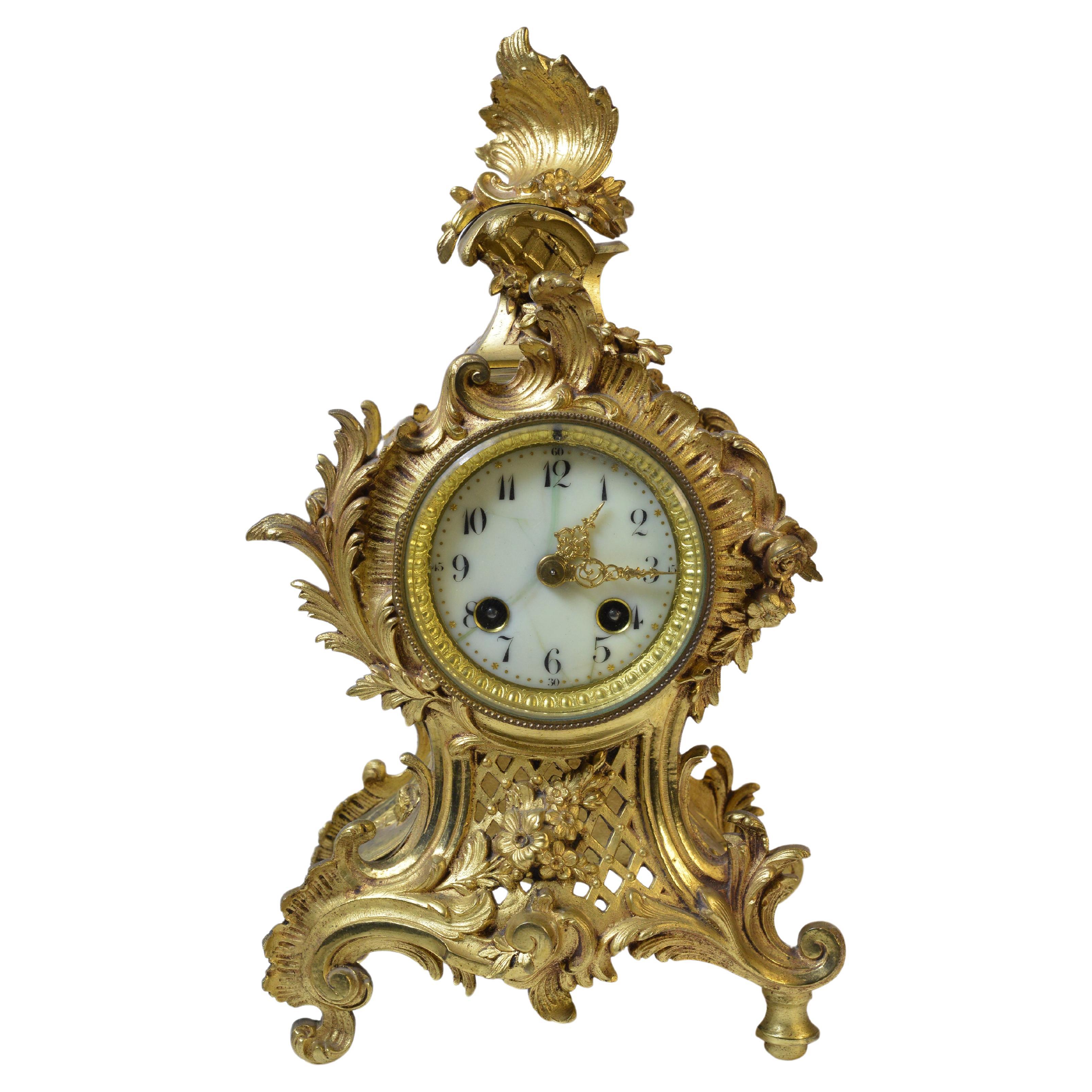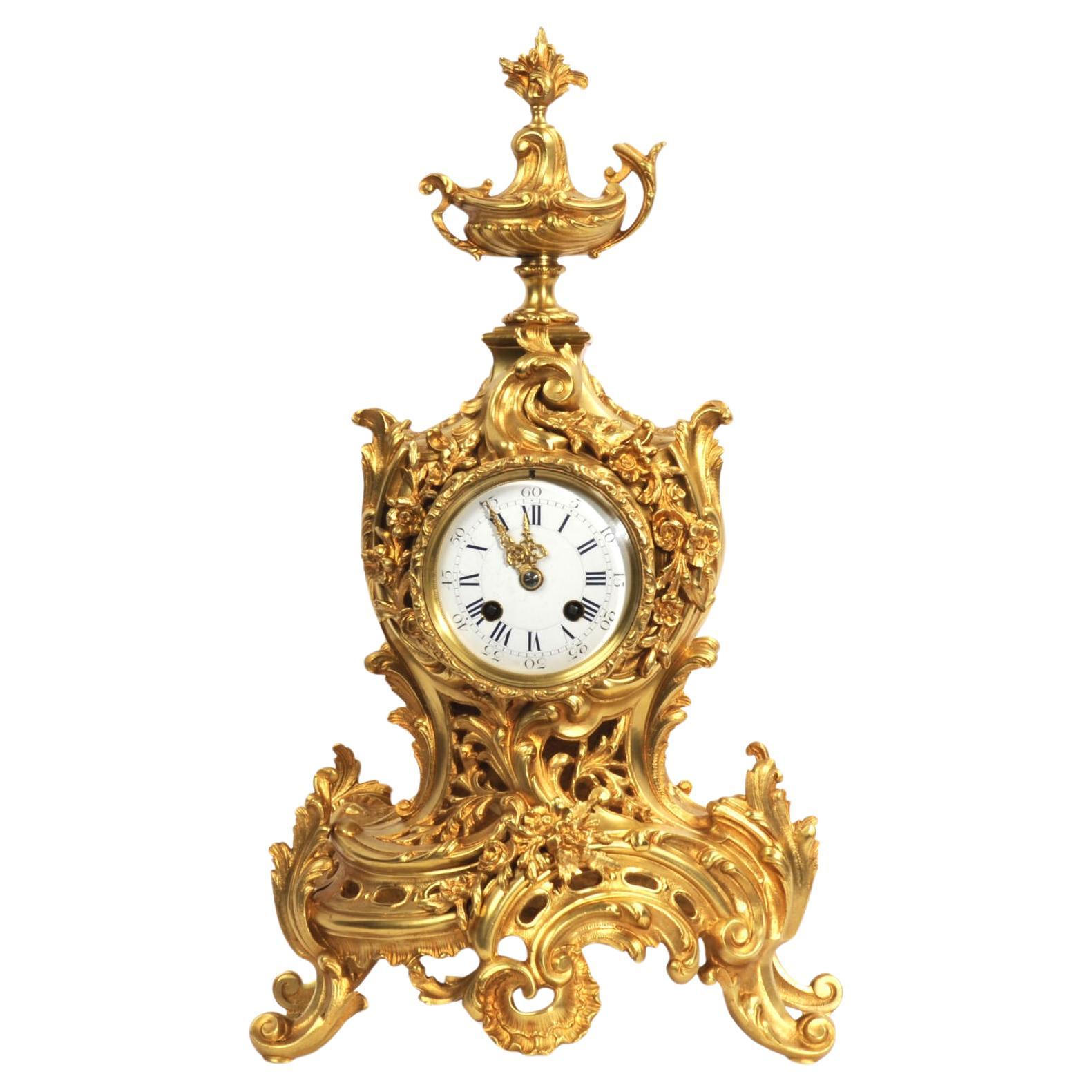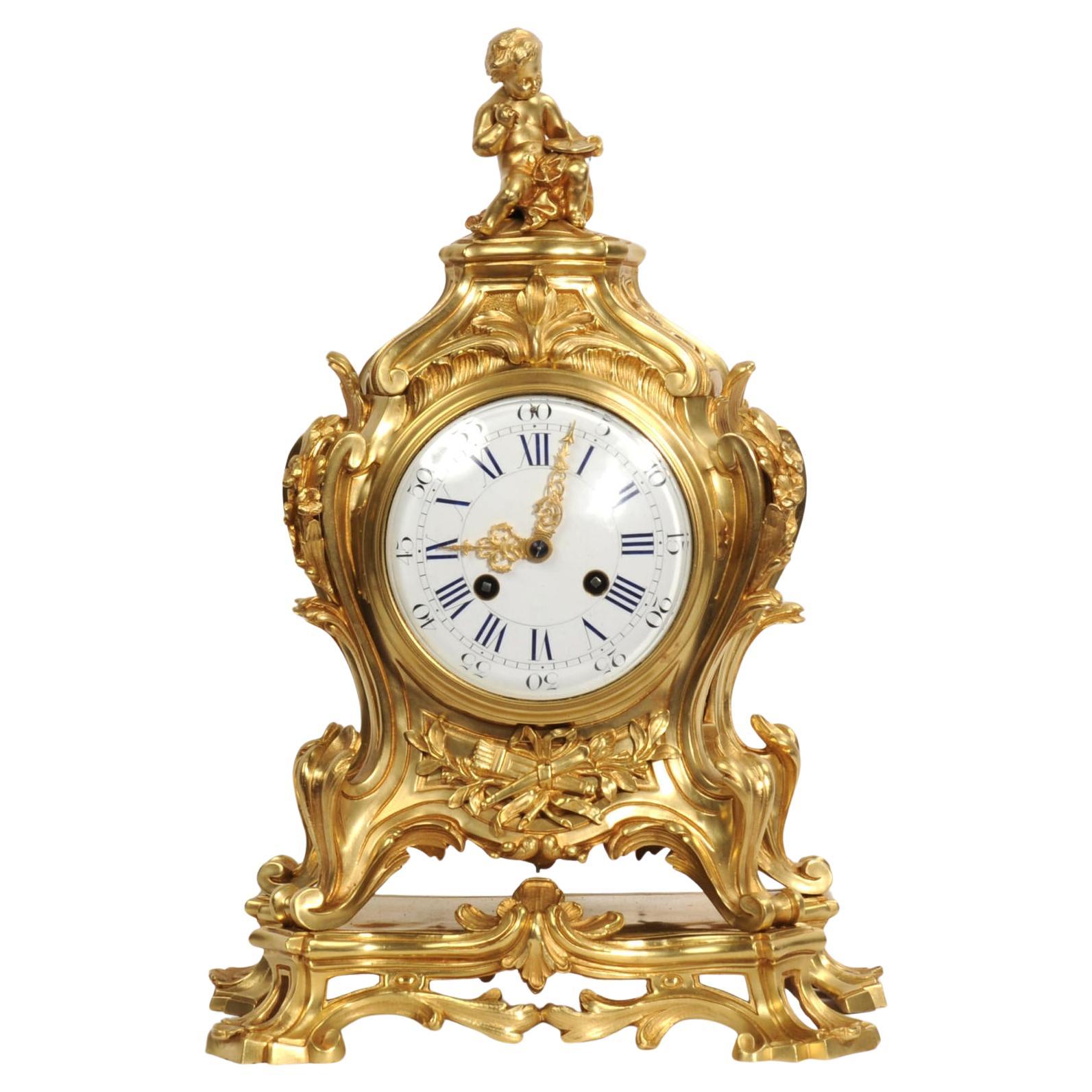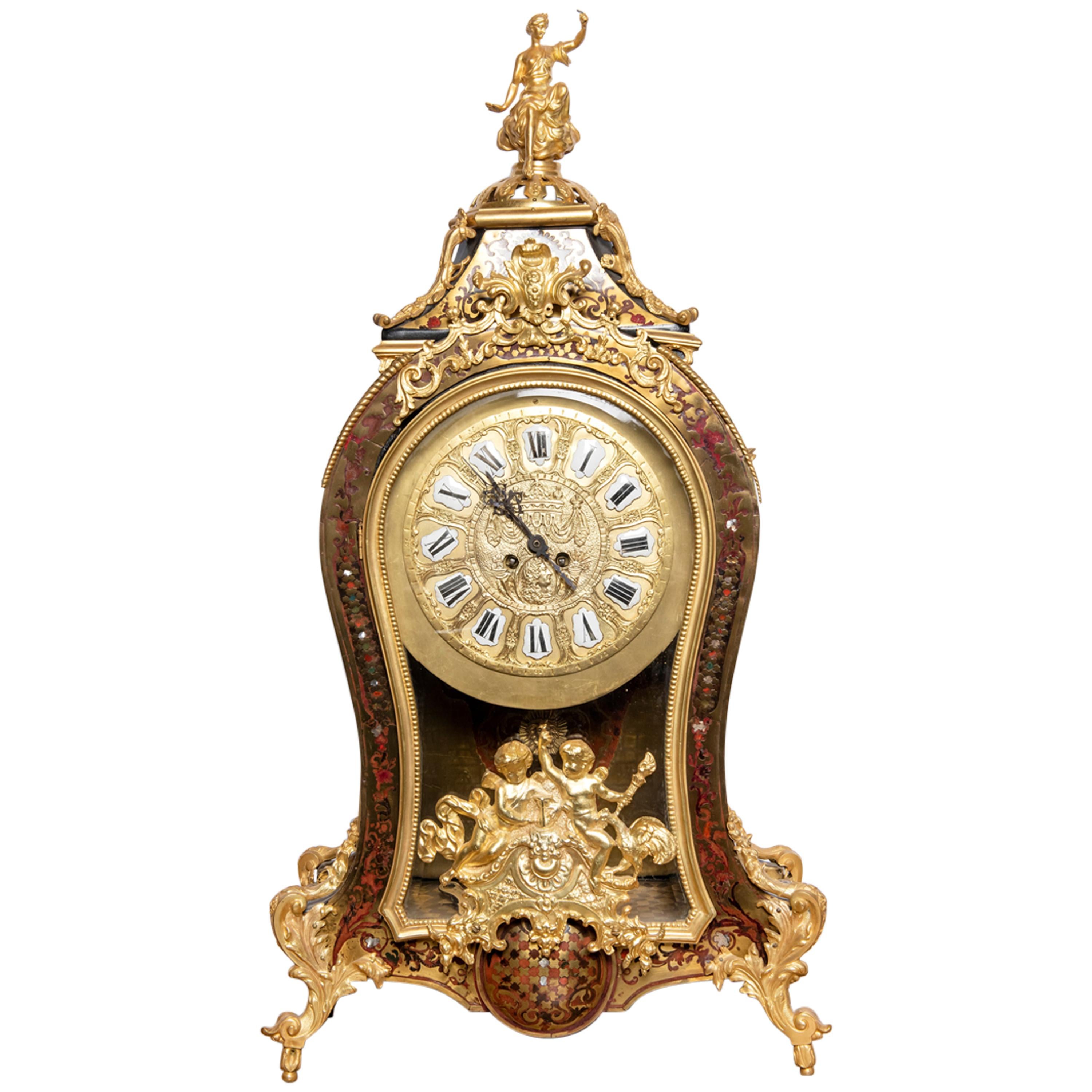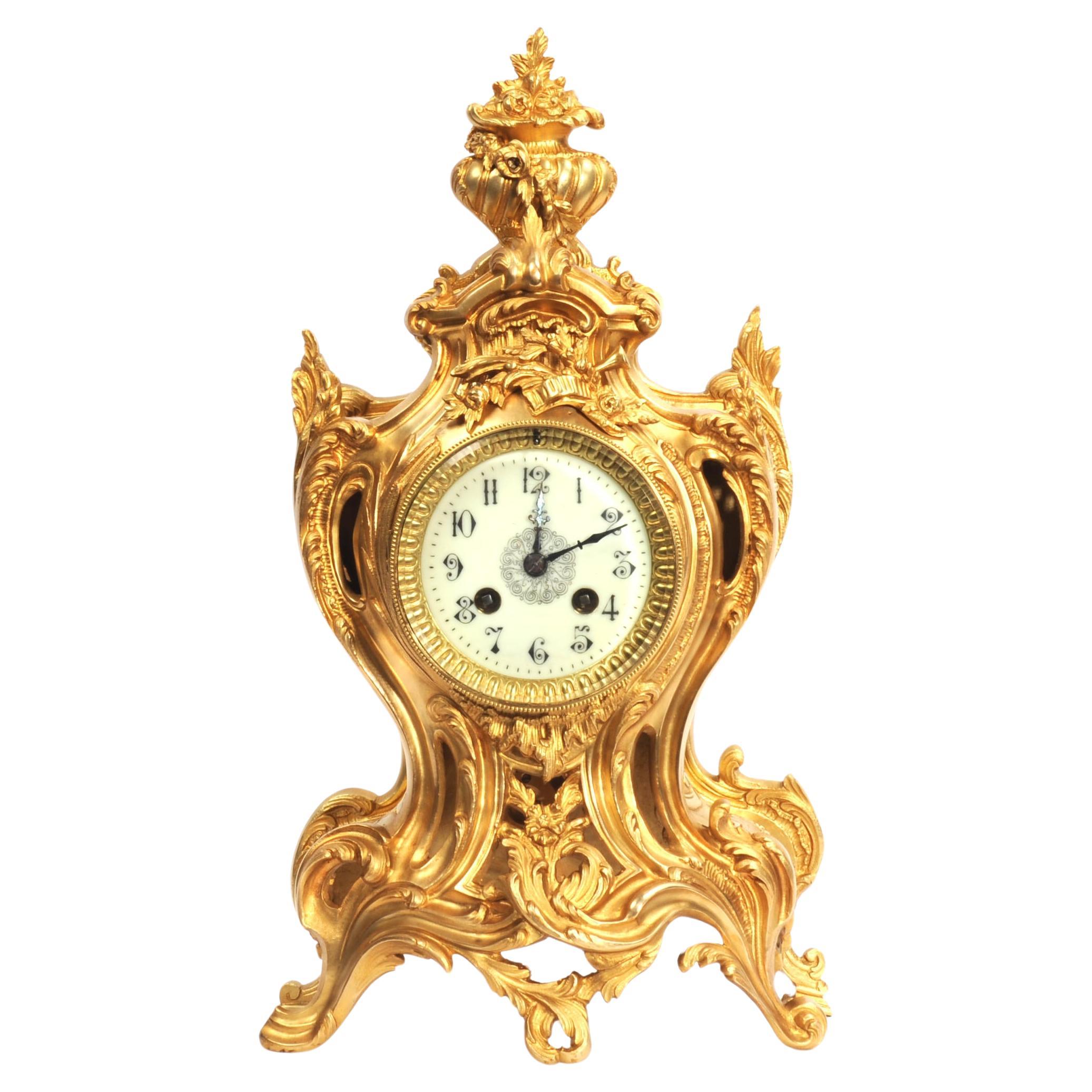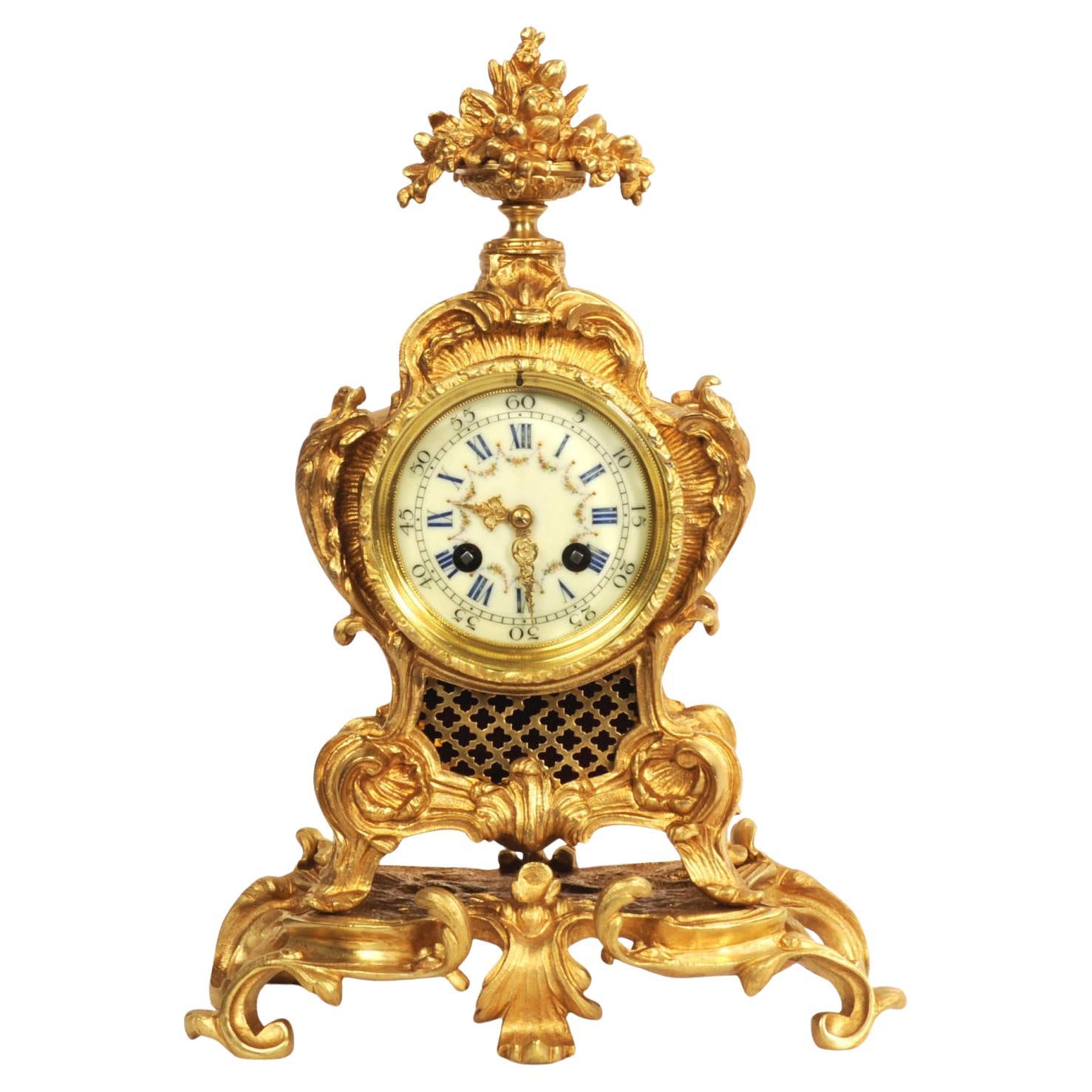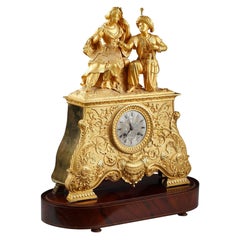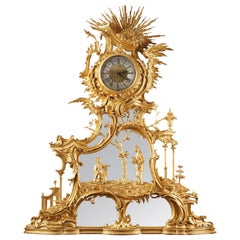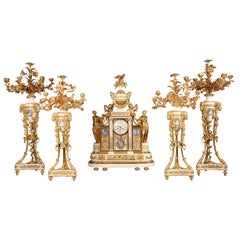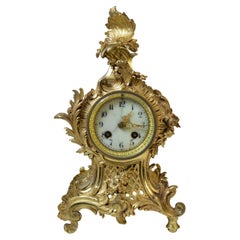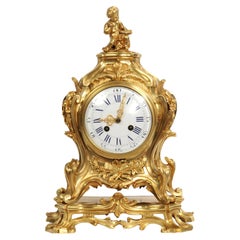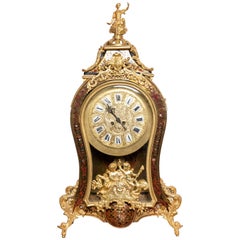Items Similar to "The Source" Gilt bronze Clock attr. to L. Messagé & F.Linke, France, circa 1890
Want more images or videos?
Request additional images or videos from the seller
1 of 9
"The Source" Gilt bronze Clock attr. to L. Messagé & F.Linke, France, circa 1890
$14,709.16
£11,213.61
€12,500
CA$20,776.17
A$22,716.06
CHF 11,876.19
MX$273,270.24
NOK 150,281.39
SEK 140,950.70
DKK 95,203.03
About the Item
Charming clock in the shape of a Rocaille-inspired cartel in chiseled and gilded bronze. Scalloped marine-inspired decor representing a trophy with oars, dolphins, reeds and flowers on a trellis background. The white enamel dial is surmounted by an allegory of the Source personified by a Cupid pouring water from a pot and holding an oar. Ending with four arched legs, it rests on a scrolled terrace decorated with acanthus and rocks. The design of this clock is characteristic of the style of Léon Messagé.
Related Work :
Similar gilded bronze clock with the design attribited to L. Messagé.
C. Payne, Francois Linke 1855-1946: The Belle Epoque of French Furniture, Antique Collector's Club Ltd., Woodbridge, 2003, pl. 104, p. 93
Biography :
Léon Messagé is a renowned designer and sculptor who integrated in his ornaments related to the Rocaille asymmetry, new lines and shapes announcing the “Art Nouveau” style. But even though, Messagé found inspiration with these 18th century artists, such as Nicolas Pineau or J. A. Meissonier, he didn’t simply copy their work and showed great originality, even extravagance, with some designs contained in "Cahier des dessins et croquis style Louis XV". He realized numerous sketches on grey paper before the execution of a reduced or life sized model of his ornaments, made of wax or terra-cotta. From 1885, Léon Messagé started working with important Parisian cabinet-makers such Joseph-Emmanuel Zwiener (1849-1895) and François Linke (1855-1946). François Linke developed his personal style, with such talent and quality that he was named during the 1900 Universal Exhibition the "Linke Style". His tremendous success and his particular formal imagination came from his association with the designer Léon Messagé. The mutual influences concerning these three artists can be concretely observed in numerous realizations.
François Linke, born in 1855 in Bohemia (Czechoslovakia), worked as a cabinet-maker in Paris from about 1882 until his death in 1946. In 1900, at the apex of his career, he opened a new shop at the famous Parisian place Vendôme. He specialized in Louis XV and Louis XVI style furniture: all pieces were beautifully mounted with gilt-bronze ornaments, and he received numerous commissions. Later Linke decided to collaborate with the well-known sculptor Léon Messagé and integrated new lines and shapes announcing the “Art Nouveau” style. His great success is definitely the 1900 Universal Exhibition where he was awarded the gold medal for his extraordinary kingwood desk, designed by Messagé. At this occasion, the “Revue artistique et industrielle” commented that “Linke's stand is the biggest show in the history of art furniture”.
- Attributed to:Léon Messagé (Designer)François Linke (Metalworker)
- Dimensions:Height: 10.4 in (26.4 cm)Width: 5.52 in (14 cm)Depth: 3.55 in (9 cm)
- Style:Rococo Revival (In the Style Of)
- Materials and Techniques:
- Place of Origin:
- Period:
- Date of Manufacture:circa 1890
- Condition:Wear consistent with age and use.
- Seller Location:PARIS, FR
- Reference Number:1stDibs: LU3860340781962
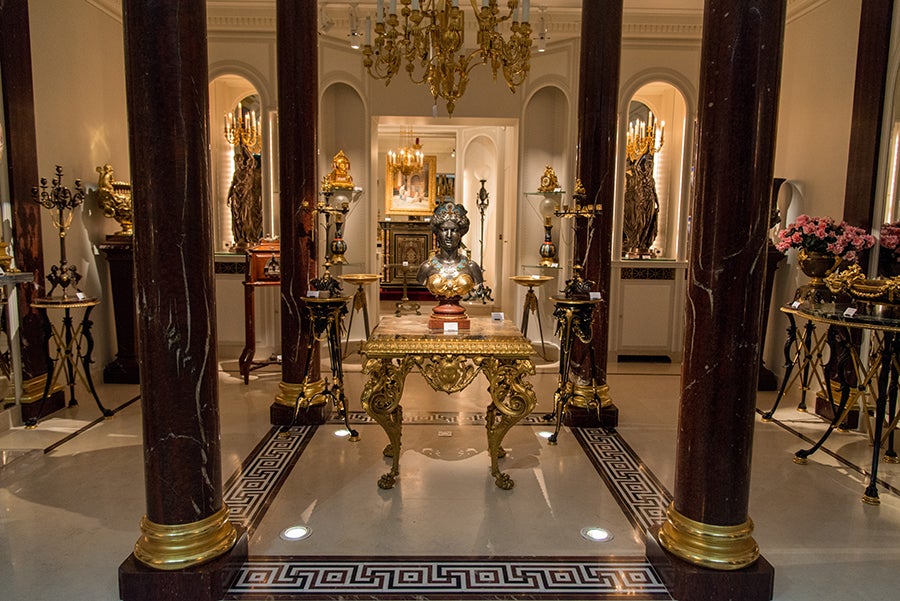
About the Seller
4.9
Gold Seller
Premium sellers maintaining a 4.3+ rating and 24-hour response times
Established in 1997
1stDibs seller since 2018
90 sales on 1stDibs
Typical response time: <1 hour
Associations
International Confederation of Art and Antique Dealers' Associations
- ShippingRetrieving quote...Shipping from: PARIS, France
- Return Policy
Authenticity Guarantee
In the unlikely event there’s an issue with an item’s authenticity, contact us within 1 year for a full refund. DetailsMoney-Back Guarantee
If your item is not as described, is damaged in transit, or does not arrive, contact us within 7 days for a full refund. Details24-Hour Cancellation
You have a 24-hour grace period in which to reconsider your purchase, with no questions asked.Vetted Professional Sellers
Our world-class sellers must adhere to strict standards for service and quality, maintaining the integrity of our listings.Price-Match Guarantee
If you find that a seller listed the same item for a lower price elsewhere, we’ll match it.Trusted Global Delivery
Our best-in-class carrier network provides specialized shipping options worldwide, including custom delivery.More From This Seller
View AllLeila and the Giaour Gilded Bronze Clock, France, Circa 1830
Located in PARIS, FR
Dial signed Polti Frères
Measures: With base or glass: Height 61 cm (24 in.), width 51,5 cm (20.3 in.), depth 23.5 cm (9,2 in.)
Without base: Height 52 cm (20,5 in.), width 42 cm (16.5 in.), depth 12.5 cm (4.9 in.)
Important philhellenic clock in burnished and amati gilded bronze, finely chiseled, representing on the terrace a couple elegantly dressed in "the turkish style", and richly decorated with foliage, scrolls and flowers. The feet, decorated with water leaves, rest on an oval wooden base covered with a globe.
The theme of the clock comes from The Giaour, a fragment of a Turkish Tale, an English poem by Lord Byron published in may 1813 which tells the thwarted love of a Venetian, the Giaour – term by which the Turks designate infidels and especially Christians – and of Leila, a slave belonging to Hassan’s seraglio, military leader of a Turkish province. The betrayal of Leila discovered, she will be thrown into the sea and her lover will avenge her by killing Hassan, then taking refuge in a monastery.
Symbol of prestige and modernity, the decorative clocks are a reflection of the taste of the era of a wealthy bourgeoisie and may be the subject of diplomatic gifts or between individuals.
Beyond the purely decorative aspect of such objects, watchmaking in the 19th century is part of a subtle mix of political, historical and literary references.
This philhellenic movement converning the West finds a particular echo in France, one of the countries with the United Kingdom and Russia having suported the Greeks during their war of independance (1821-1830) to free oneself from the grip of the Ottoman Empire. Many clocks...
Category
Antique 1830s French Mantel Clocks
Materials
Bronze
$12,708 Sale Price
55% Off
"Chinese" Giltwood Clock After a Design by Thomas Johnson, England, circa 1860
By Thomas Johnson, London 1
Located in PARIS, FR
Important giltwood clock with a mirror background of Rococo inspiration with a rich sinuous and asymmetrical decoration representing a Chinese couple ab...
Category
Antique 1860s English Chinese Chippendale Mantel Clocks
Materials
Giltwood
Ormolu Clock "with a Swing", France, circa 1820
Located in PARIS, FR
Very fine floral and decorated Restauration period ormolu clock, figuring two baluster columns joint together by a floral arch, and topped by a crown of roses. Roman numbers indicate...
Category
Antique 1820s French Restauration Mantel Clocks
Materials
Bronze
Important Five Pieces Marble and Gilded Bronze Clock Set, France, Circa 1860
By Henri Picard
Located in PARIS, FR
Marked on the dial Furet & Bon, Hrs du Roy, à Paris
Measures: Clock – Height 98 cm (38 1/2 in.), width 70 cm (27 1/2 in.), depth 25 cm (9 3/4 in.)
Candelabra – Height 116 cm (45 ...
Category
Antique 1860s French Louis XVI Mantel Clocks
Materials
Marble, Bronze
A-E Beurdeley, « The Coronation of Science » Clock, France, circa 1880
By Emmanuel-Alfred Beurdeley
Located in PARIS, FR
Signed on the dial A. Beurdeley Paris
Mechanism signed J LEFEBVRE FILS PARIS
Rare Louis XVI style clock in mercury-gilded and patinated chiseled bronze and white marble. In the form of an arched pediment, it is decorated with four Cupids, two carrying a garland of flowers highlighting the dial, and two others symbolizing the coronation of Science. The molded base in white marble, with a double recess, is decorated with a ribboned torus, a frieze of ribboned oak leaves and interlacing, and rests on six flattened ball feet.
Related work :
In 1774, the bronze-caster Robert Osmond (1711-1789) designed a first model known as “architectural drawing” illustrating The Coronation of Science. Also called The Children of France, it is decorated with a putti crowning a young girl drawing with a compass and delivered to Versailles by Lépine, clockmaker to the King since 1762, for the apartment of Madame Royale in the Princes’ Wing, on December 28, 1778. (see photo attached)
This clock is described in the inventory of Versailles clocks...
Category
Antique 1870s French Louis XVI Mantel Clocks
Materials
Marble, Bronze
G. Denière, "Pendule à cage", France, circa 1860
By Guillaume Denière, Henri Picard
Located in PARIS, FR
Large and rare Louis XVI style cage clock in chiseled and gilded bronze, rectangular in shape, highlighted with friezes of water leaves and pearls, with glass panels decorated with t...
Category
Antique 1860s French Louis XVI Mantel Clocks
Materials
Bronze
$45,304 / item
You May Also Like
Antique French Japy Freres Gilt Bronze Rococo Clock 19th century
By Japy Frères
Located in Sweden, SE
Very good condition, repairs to dial, minor age and usage wear, gold finish well preserved, movement is running only with pendulum off and not striking at all as needs service.
Category
Antique Late 19th Century French Rococo Table Clocks and Desk Clocks
Materials
Brass, Bronze
Antique French Gilt Bronze Rococo Clock
By A.D. Mougin
Located in Belper, Derbyshire
A large, superb and very decorative original antique French clock by the famous maker A.D. Mougin. It is boldly modelled in the Rococo style in finely gilded bronze. Asymmetric waisted case, decorated profusely with sweeping acanthus leaves, 'C' scrolls and floral swags. To the top is a large elaborate final of a stylised flaming lamp...
Category
Antique 19th Century French Rococo Mantel Clocks
Materials
Bronze
Large Antique French Gilt Bronze Rococo Clock by Samuel Marti
By Samuel Marti
Located in Belper, Derbyshire
This impressive and finely cast gilt-bronze mantel clock is a superb example of the 19th-century French Rococo revival, after the celebrated designs of the bronzier Robert Osmond. Bo...
Category
Antique 19th Century Unknown Rococo Revival Mantel Clocks
Materials
Bronze
Gilt Bronze and Wood Table Clock, France, Late 19th Century
By Ecole Boulle
Located in Buenos Aires, Buenos Aires
Gilt bronze and wood table clock, France, late 19th century.
Category
Antique Late 19th Century French Louis XV Table Clocks and Desk Clocks
Materials
Bronze
Antique French Gilt Bronze Rococo Clock by Samuel Marti
By Samuel Marti
Located in Belper, Derbyshire
A stunning original antique French gilt bronze clock by Samuel Marti. Beautifully made in he Rococo style, formed of sinuous curves of acanthus and scrolls, pieced to allow the pendu...
Category
Antique 19th Century French Rococo Mantel Clocks
Materials
Bronze
Antique French Gilt Bronze Rococo Clock - Fully Restored
By Samuel Marti
Located in Belper, Derbyshire
A beautiful clock of ornate Rococo design, the case finely cast with scrolling acanthus and rocaille ornament, the front and sides with pierced lattice panels back with fabric, raise...
Category
Antique 19th Century French Rococo Mantel Clocks
Materials
Bronze
More Ways To Browse
Antique Water Pot
C Payne
Antique Oars
Bohemia Czechoslovakia
Trophy Oar
18th Century English Bracket Clock
Strut Clock
Art Deco Mirrored Clock
Deco Mirror Clock
Silver English Clock
World Desk Clocks
George Iii Bracket Clock
Gubelin Clock
Hermes Clock
Rotating Clock
Small Desk Clock
Cartier Alarm Clocks
Clock Angel
